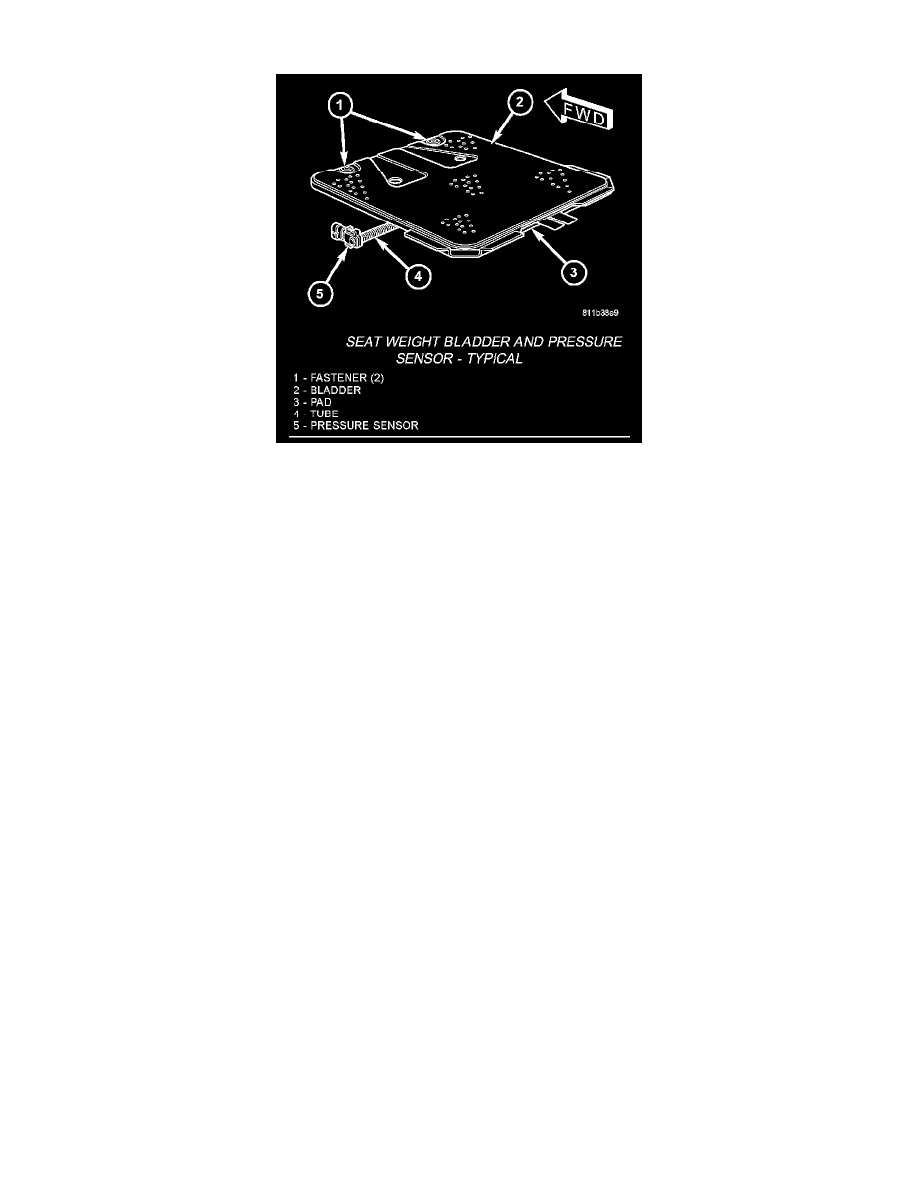Grand Caravan V6-3.3L VIN R (2005)

Seat Sensor/Switch: Description and Operation
Seat Weight Bladder And Pressure Sensor - Typical
Vehicles equipped with the Occupant Classification System (OCS) have a seat weight bladder and pressure sensor unit that is integral to the passenger
front seat cushion. The bladder is sandwiched between the seat cushion pan and seat cushion foam.
The bladder consists of two rectangular sheets of an elastomeric material and a molded plastic elbow fitting. The two sheets of material are sealed
together around their perimeter and heat staked to each other at numerous regular points within their
field. The elbow fitting is sealed to a small round hole in the lower surface of the bladder and is pointed downward where it passes through a clearance
hole in the insulator pad and extends to just below the seat cushion. The bladder is then filled with a silicone fluid to become a pliable, quilted
membrane.
Under the seat cushion a short tube is securely clamped at one end to the bladder nipple, and at the other end to a nipple on the electronic pressure
sensor. The sensor housing features an integral mount that snaps over a tab integral to the stamped steel Occupant Classification Module (OCM)
mounting bracket welded to the underside of the passenger front seat cushion frame.
The seat weight bladder and pressure sensor cannot be adjusted or repaired. The components of the passenger front seat cushion of a vehicle equipped
with the OCS including the cushion frame, seat weight bladder and pressure sensor, seat cushion foam, wire harness and the OCM are serviced only as a
factory-calibrated, assembled and tamper-evident unit. Only the OCM and the seat cushion trim are available for separate service replacement. Once a
service replacement package has been installed in a vehicle, the OCM can thereafter be serviced only by replacing the entire passenger front seat cushion
unit with another complete service replacement package.
The seat weight bladder and pressure sensor unit is designed to sense the relative weight of a load applied to the passenger front seat cushion, which
provides a logic input to the microprocessor of the Occupant Classification Module (OCM). When a load is applied to the seat cushion, fluid within the
bladder becomes pressurized. These changes in bladder fluid pressure are measured by the pressure sensor under the seat cushion through the bladder
tube. As the pressure within the bladder changes, the circuitry of the pressure sensor changes the output voltage of the sensor.
The pressure sensor receives a nominal five volts and a ground through hard wired circuits from the OCM. The OCM then monitors the pressure sensor
output voltage on the Programmable Communication Interface (PCI) data bus circuit.
